R.M.S. Narkunda of 1920 to 1942
Please Note: Firefox and some other Search Engines may not be suitable
Use Google Chrome for this Web Page to load perfectly!
Please Note: All ssMaritime and other related maritime
sites are 100% non-commercial and privately owned, thus ssmaritime is NOT
associated with any shipping company or any other organisation! Although the
author has worked and been involved in the passenger shipping industry for well
over 60 years, but due to his old age and poor health, he was forced to retire.
Yet, he has completed well over 1,435 Classic Liners, Passenger-Cargo Liners as
well as humble converted C3 converted Migrant Liners, which has transported
countless thousands folk to the new world, as well on vacations’. I trust
the features online will continue to provide Classic Liner and Ship enthusiasts
both the information they are seeking, but more so provide a great deal of
pleasure and relive many happy memories!
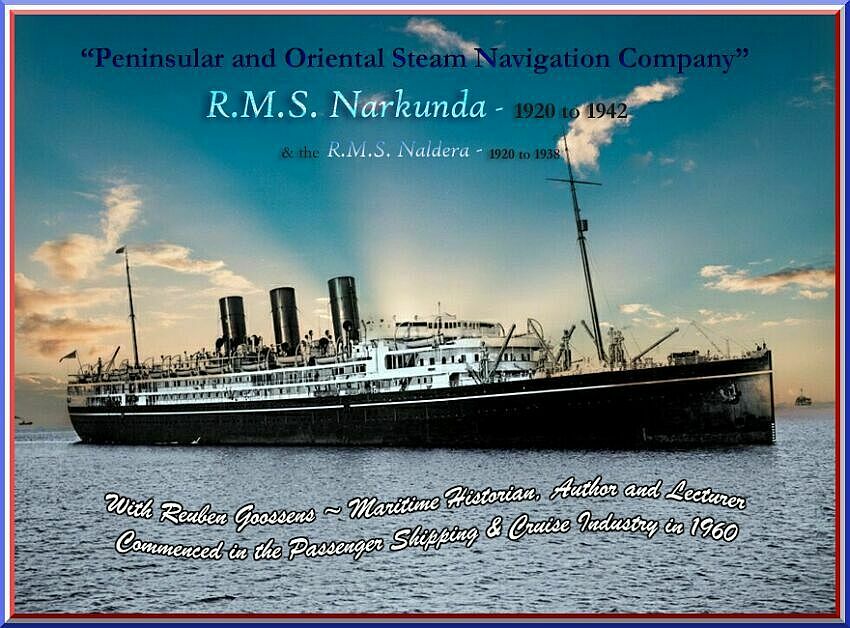
The R.M.S. Narkunda is seen above in her later days with her superstructure painted white
and some of the ugly structures far forward between the forward lifeboats removed
Photograph was colourised by the author
Please Note: Postcards, photographs & other images are either from the author’s private collection.
A special thank to
the two ssmaritime supporters for sending their most welcome photos &
postcards
I am sorry but some of the images shown on this page are not of the greatest of quality, but they were the best available
What is located below is usually called the “introduction”, but as the almost similar sisters the “Naldera” and the “Narkunda” had a rather shaky start as they were ordered not long before the beginning of World War One. Thus I will first cover their plans being made, and “Peninsular and Oriental Steam Navigation Company” placing orders for them to be built by two different shipyards, and the events that followed right to the ships completion.
Construction, War service and completed as Liners:
“Peninsular and Oriental Steam Navigation Company” had finalized plans for a pair of ships, the 15,825 GRT (Gross Registered Ton) “Naldera” and her slightly larger sister the 16,118 GRT “Narkunda”. These two ships would become the company’s very first three funnelled ships, as well as being their very first ship’s to have cruiser sterns.
The “Peninsular and Oriental Steam
Navigation Company” ordered the first of the pair the
“Naldera” in 1913, and she would be built by “Caird &
Company” shipyards,
Whilst the second of this pair the “Narkunda” was ordered to be built by “Harland & Wolff Ltd” in Belfast around the same time as the Naldera in 1913, and she was soon laid down in Yard 421, slipway 8.
However, all work on these ships was completely stopped at the outbreak of World War One that officially commenced on June 21, 1914, and for the next three years their unfinished hulls laid idle remaining in their respective stocks, as other more important ships needed to be completed first for war duties, these being ships such as the “Olympic” and “Britannic”, etc. However, then came a time that proved to be nothing short of a time of confusion in relation what to do with these two ships. Around 1917 the British Government thought to complete them as large cargo ships, but then the idea came to finish them as troop ships, but that was dropped, next it was thought to have them as hospital ships, and finally the idea came around to reconstruct them as aircraft carriers, but it was quickly decided that this would be far too costly. Finally it was decided to complete them as “Armed Merchant Cruisers”
The “Naldera” was launched on December 29, 1917, and the “Narkunda” was launched on April 25, 1918.
Mid 1918 both ships were officially requisitioned by the Admiralty for use as “Armed Merchant Cruisers” and were fitted out with eight 6-inch (150 mm) guns and two 7.5-inch (190 mm) howitzers and they entered service and they were used for a relatively short time in their respective wartime operations. It was around mid March 1919 they were returned to their owners “P&O” to be completed as passenger liners.
Restored for Merchant Duties:
Having been returned to their respective shipyards, they would finally be completed as luxury passenger liners, which would be operating on the lucrative Australian mail and passenger service. As built, both ships had coal-fired boilers, but for interest, in 1927 the “Narkunda” was converted from coal to being oil fired, which gave her a much longer operational life, whilst her slightly earlier sister “Naldera”, which for some reason was never changed and thus she had a much shorter life at sea for she was broken up in 1938.
As built, both ships had black hulls, with red boot topping, and a thin white ribbon high around their hulls. The “Naldera” as built had her superstructure painted white, but this was soon changed to fit in with the rest of the P&O fleet, including the “Narkunda”, thus her superstructure was soon repainted in the company’s traditional rather dull stone livery.
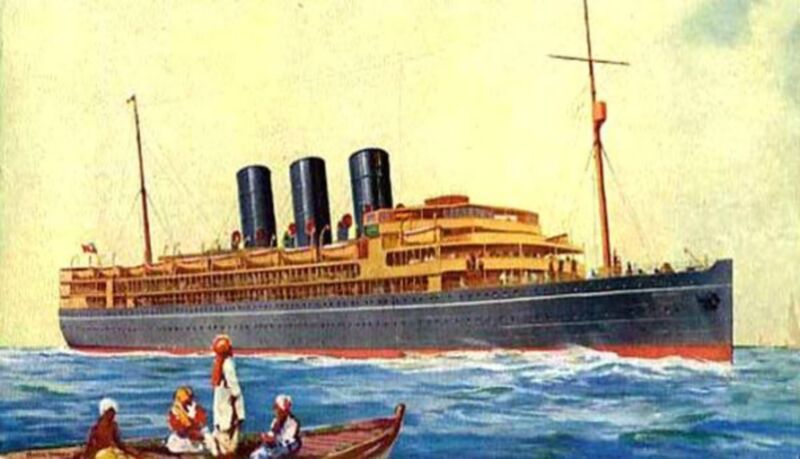
Postcard of the R.M.S. Naldera in the P&O’s dull traditional livery
Also when built, their bridges were finished in the traditional dark brown, but during a later refit their superstructures and Bridge were painted all white which revealed that rather unusual centred rounded bay style feature of their Bridges, as seen below.
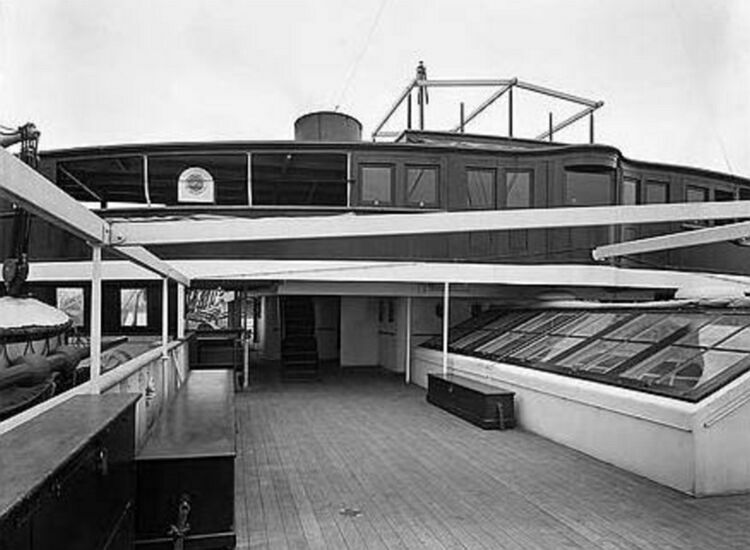
The “Naldera’s” unusual shaped Bridge and forward Boat Deck is seen here
The “Narkunda” had cabins on both sides, where we see the deck space above
It is generally claimed that they were sister ships, but technically that was not true, for they differed in certain areas. First the “Narkunda” was a slightly larger ship, both in length and tonnage, in addition she had a rather large and an unsightly forecastle with cabins added on both sides, whilst the one on the “Naldera” was more petite. They featured two tall masts and three black funnels, but only the two forward funnels were operational, whilst the aft funnel contained the ventilator system for the engine room.
Their engines were built by their respective builders, and installed were Quadruple-expansion steam engines, 1,430 NHP, 18,000 IHP, operating twin screws and sailed at a service speed of 17 knots, 18.5 knots maximum.
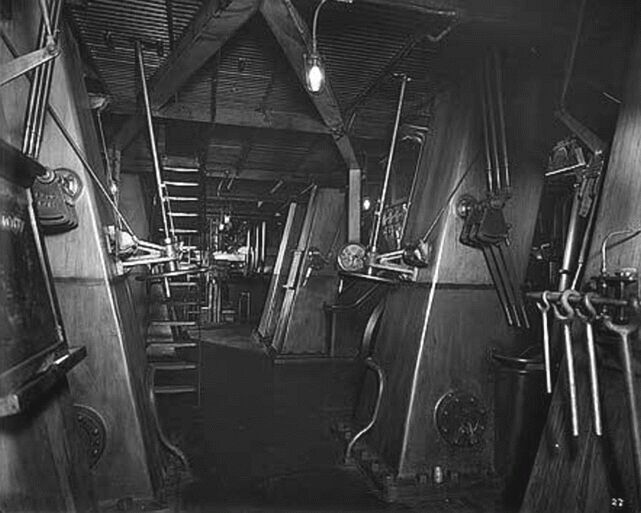
Here we see the
Engine Room’s - Starting Platform
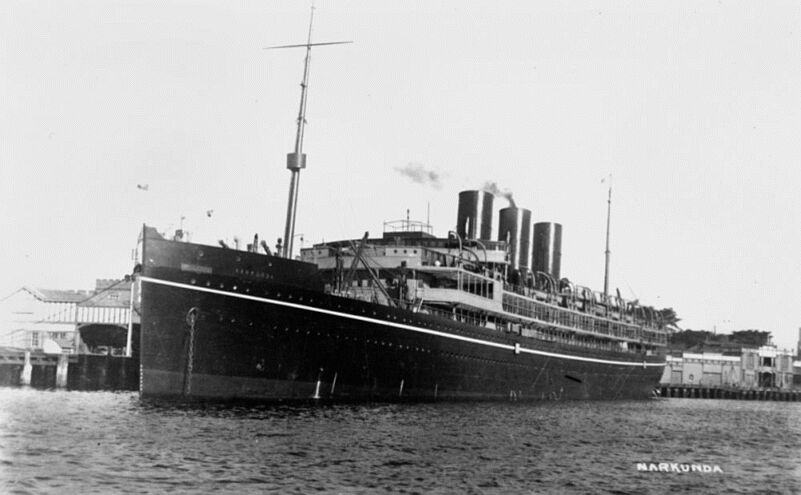
The “Narkunda” is seen berthed, however this image provides a good view of the far
forward deck section up on Boat Deck and some of her additional cabins can be seen there
Provided by
With the R.M.S. Naldera completed, she
undertook her sea trials and was delivered to P&O on March 24, 1920, and
she commenced her maiden voyage to
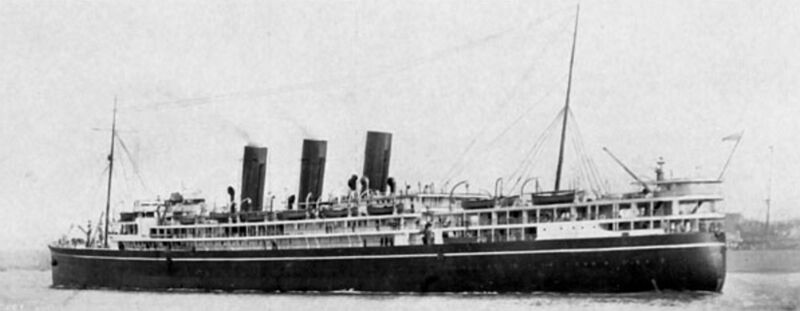
The R.M.S. Naldera is seen here as built with her white superstructure
Provided by
Whilst on March 30, 1920, the
“Narkunda” operated her sea and speed trials, which was very
successful having reached a maximum speed of 18.5 knots, and she was delivered
that same day to “The Peninsular and Oriental Steam Navigation
Company” having cost a total of £1,550,110
As already mentioned, R.M.S. Narkunda’s passenger facilities were slightly different from the Naldera’s, including those cabins having been built on both sides of the far forward large unsightly forecastle located forward of the bridge on Boat Deck. Yet these cabins did prove to be very popular, although these cabins had ‘athwart ship bunks’, meaning they ran across the ship, rather than lengthwise.
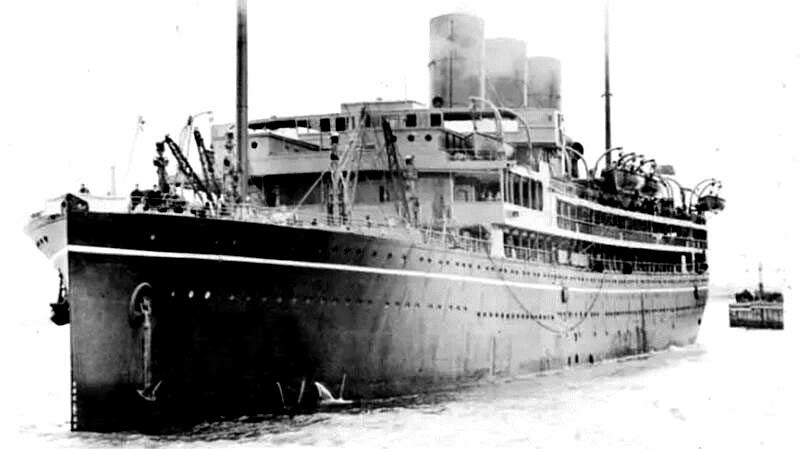
Here is a close up of her bow section and those two boxlike cabin blocks up on Boat deck
With the R.M.S. Narkunda fully crewed and
stocked up and having been made ready for her maiden voyage, she did so on
April 24, 1920, but strangely not to Australia, but she operated a single
return voyage to
Having returned to the
On her Australian voyages, she, like her
sister, sailed as follows; London, Gibraltar, Marseilles, Port Said,
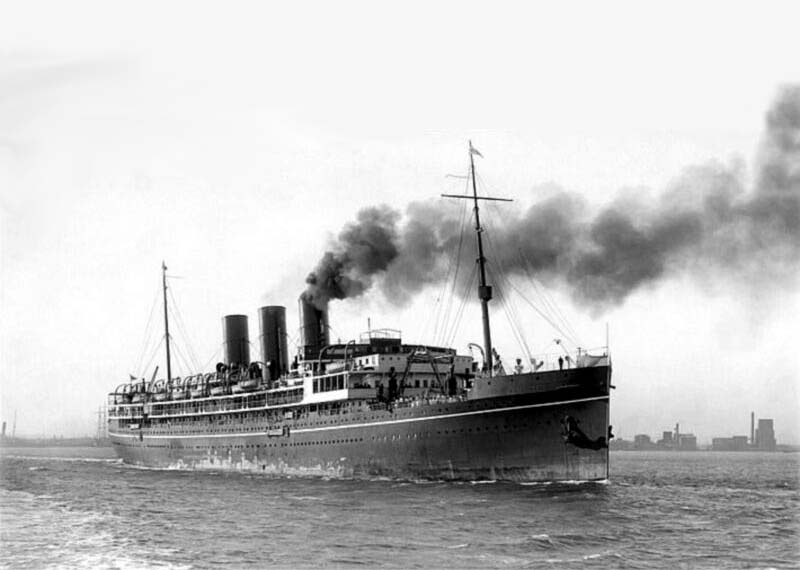
R.M.S. Narkunda is
seen departing bound for
Provided by
With the R.M.S. Narkunda having become such a
loved and popular ship with the public; quite some time ago I spoken to a past
passenger, a Mr. Davis (sadly
now deceased) who sailed on this much loved liner, and
he told me that “My darling wife and I cherished this wonderful ship and
we remember our departure so well from Princess Pier on March 31 (1923) and we had
the most wonderful trip to
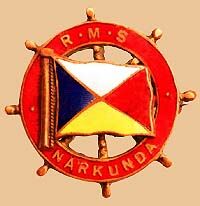
The delightful
“Narkunda” pin received from Mr. Davis, which I have reworked for
this page
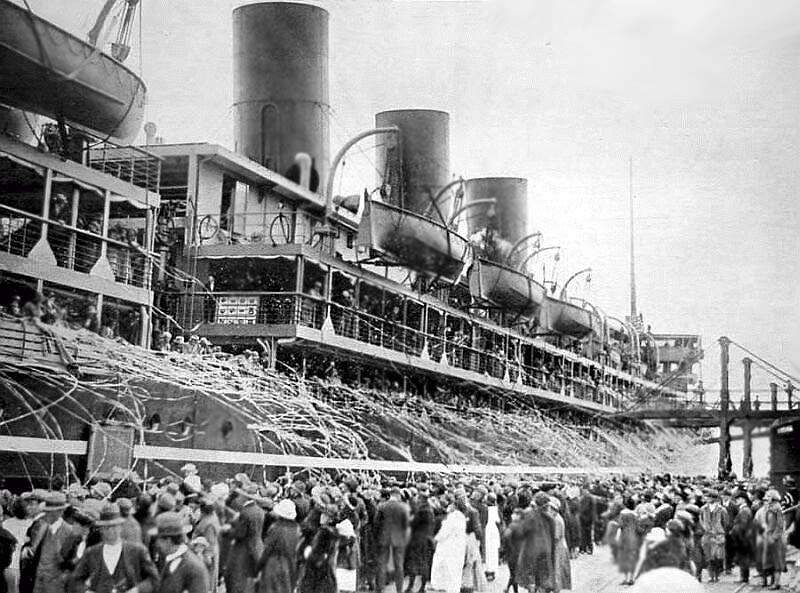
R.M.S. Narkunda is
ready to depart “Princes Pier”
This was this
voyage our above passenger and wife sailed to
forward on up on Promenade Deck and sadly cannot be seen on this photo
Provided by
For her day, her interiors became noted for all the magnificent timber panelling that was used throughout her Public Rooms, especially in that magnificent and most imposing Main Lounge that was located forward on Promenade Deck. But the Dining Saloon was the grandest venue on the ship as it was an imposing four deck high, with some fine fresco’s painted up above. Thus let us take a look on board!
****************************
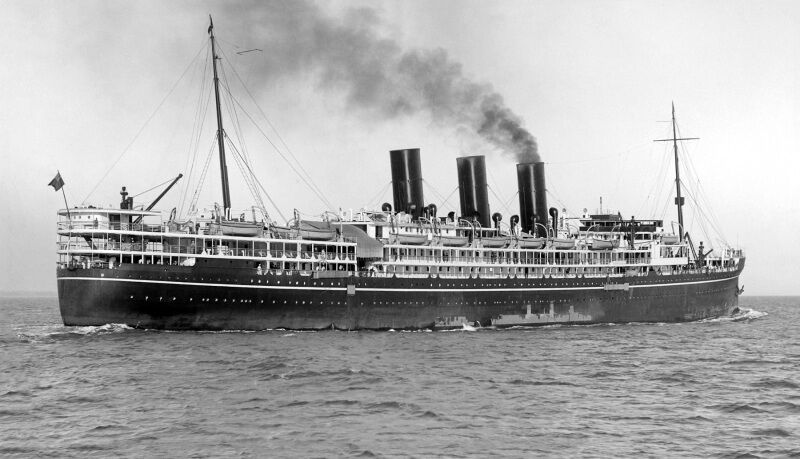
R.M.S. Narkunda is
seen at full speed at sea
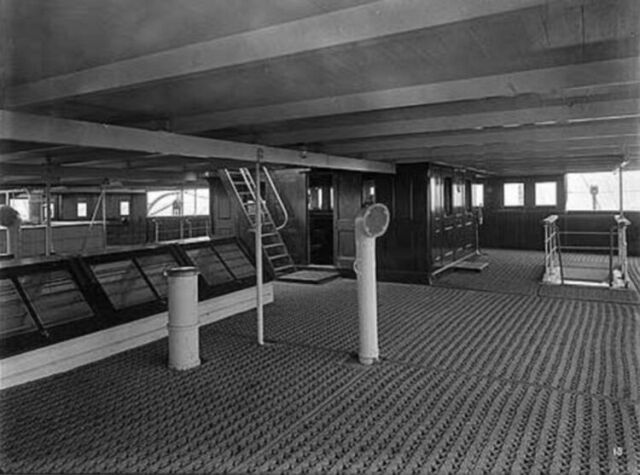
Topside far
forward he very spacious Bridge, looking from aft to forward on the starboard
side
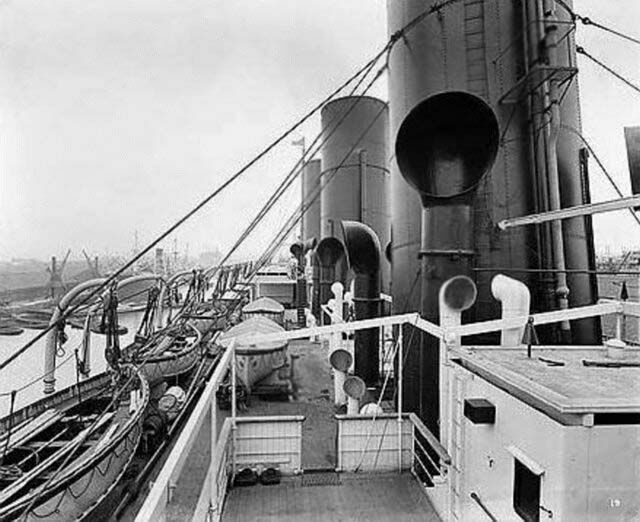
Looking aft from
the Bridge we see the Boat deck and her three funnels
First Class:
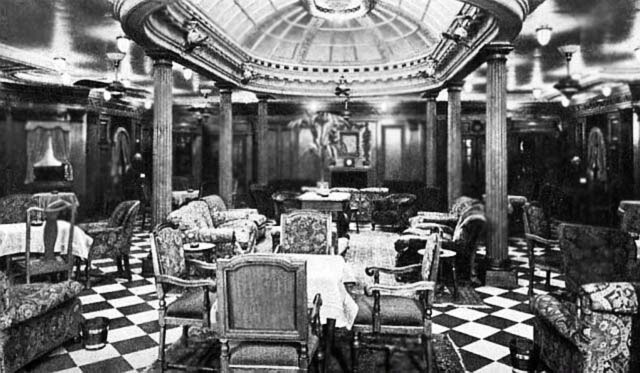
The Main lounge
forward on Promenade Deck
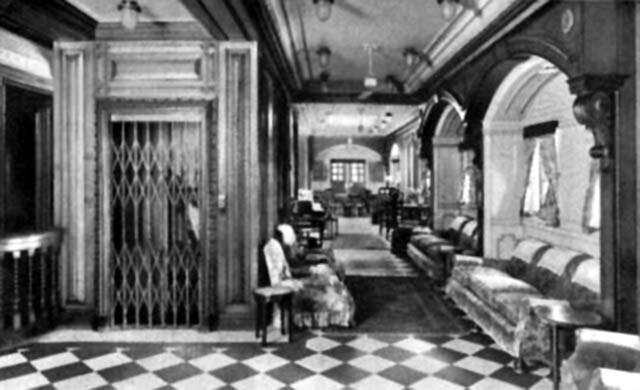
Hallway with a lift
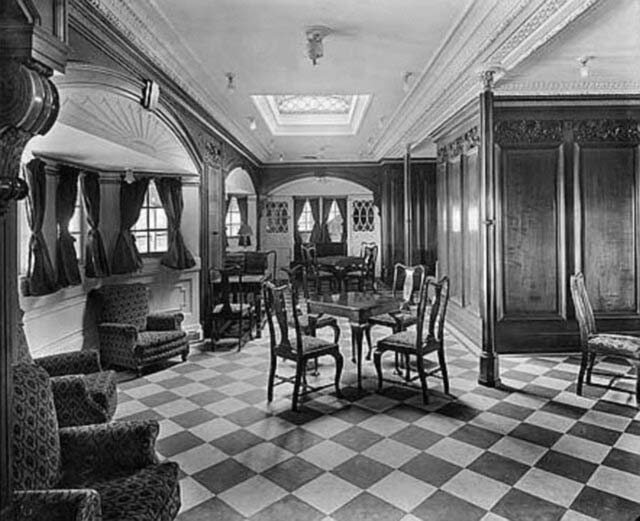
Above & below: Views of the Long Galleries also used as the Writing and Reading
Rooms
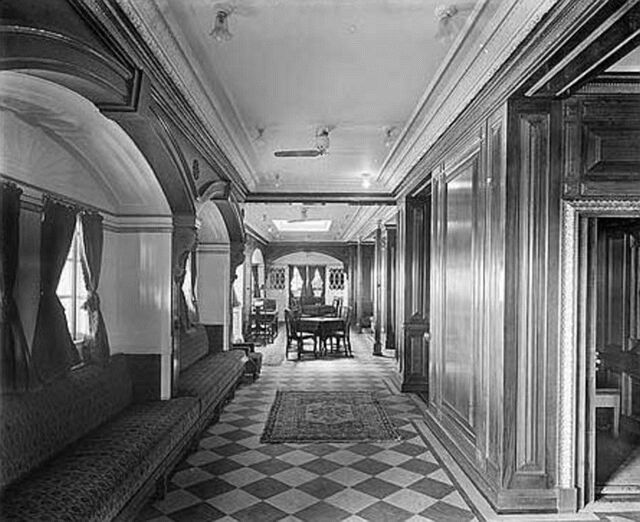
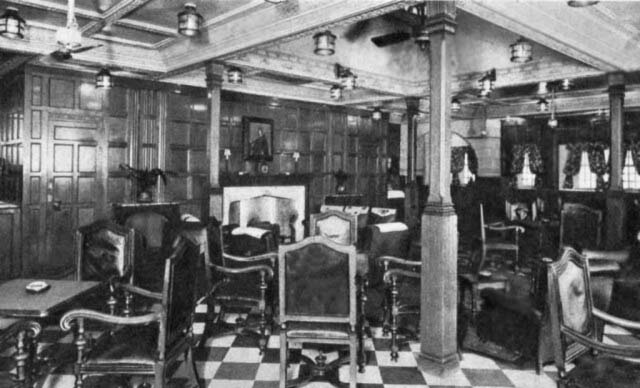
Above &
below: Here we see the beautifully panelled Smoking
Room
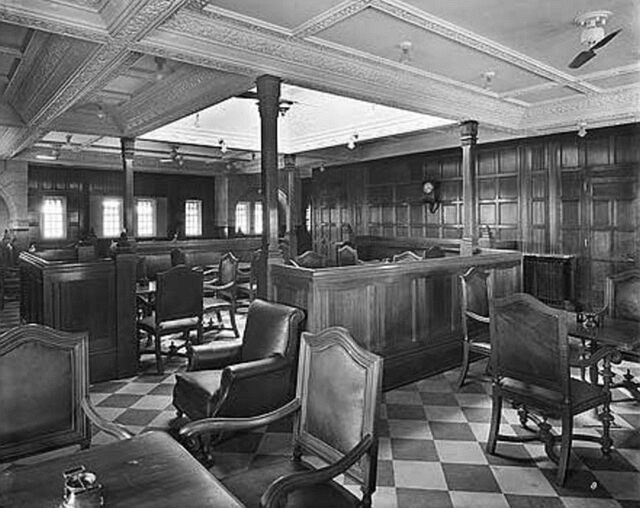
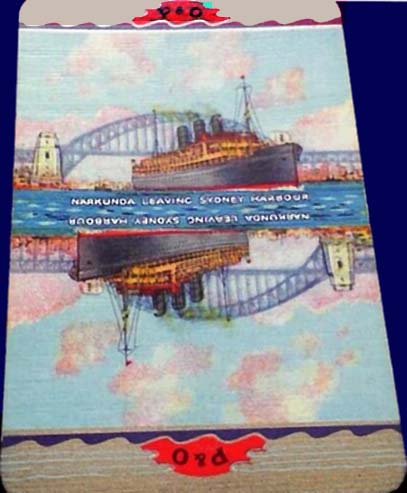
One of the ships
playing card
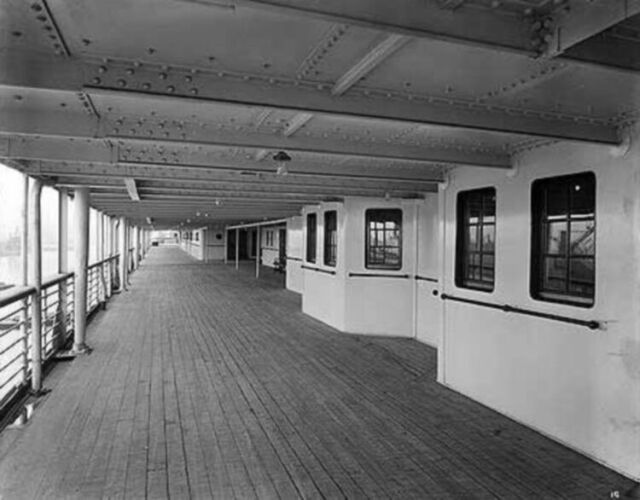
The spacious
Promenade Deck
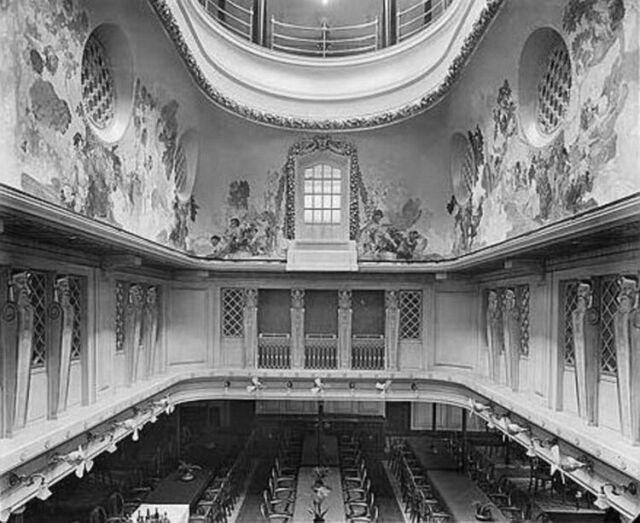
Above &
below: The spectacular four level high Dining Room
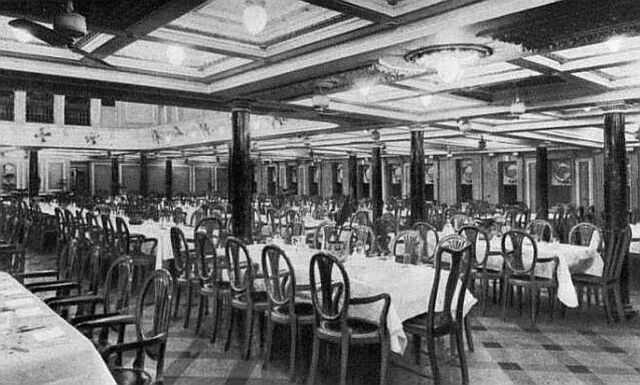
Below: A Luncheon Menu and a special St Andrew’s night Dinner Menu
over 17 years apart
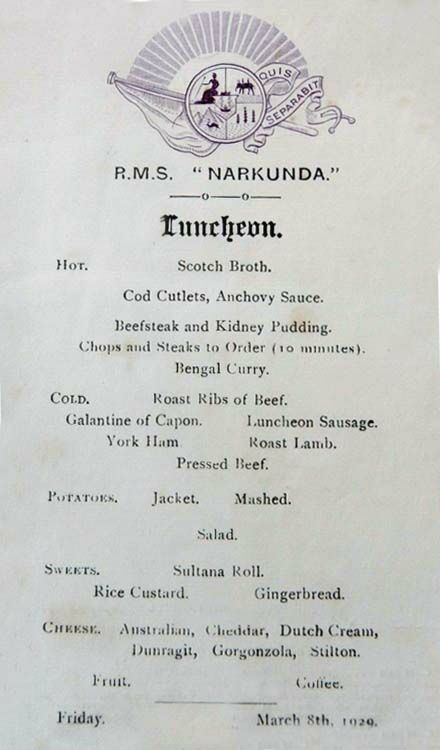
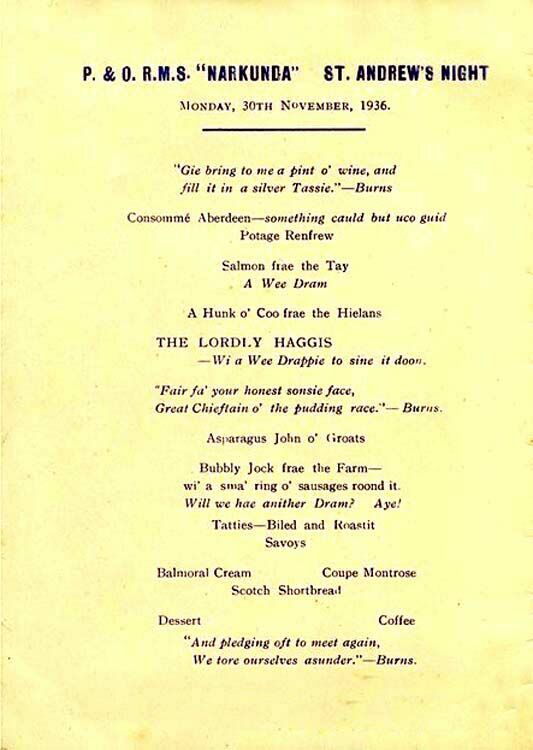
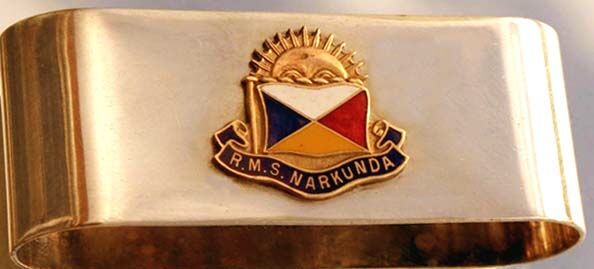
Here we see a
“Narkunda” First Class napkin ring
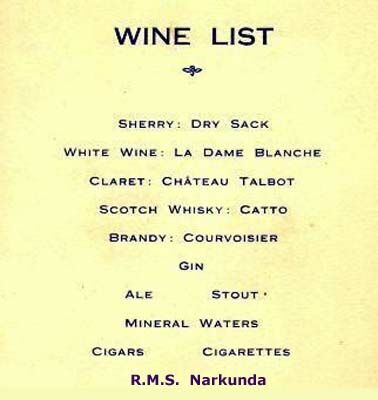
Each night a new Dinner Wine List was on offer
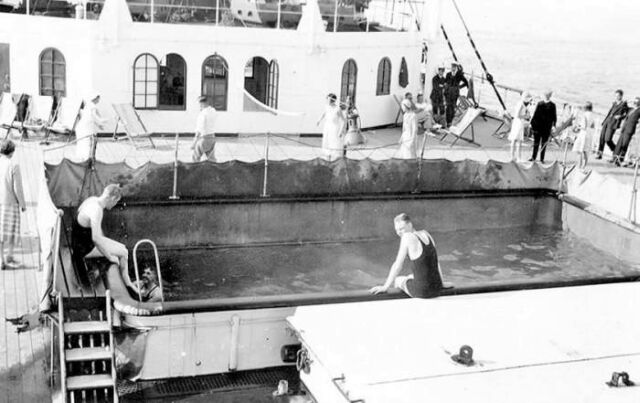
On outdoor pool would be erected in warmer climates
Although she did
have a fine indoor pool
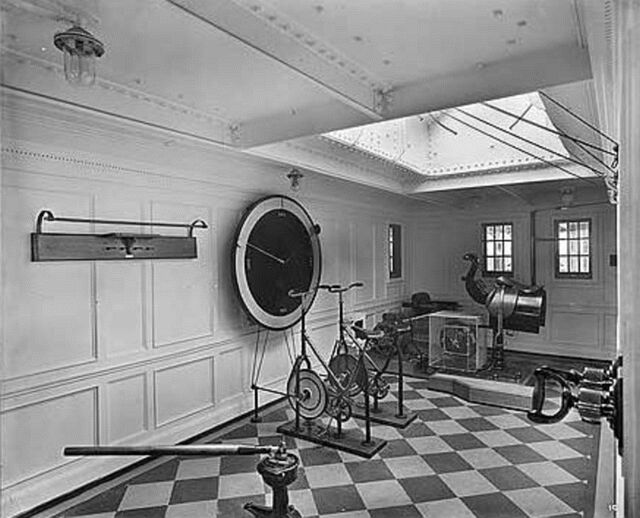
There was also a Gym at the passenger’s disposal
Accommodations:
All Suites, Staterooms and cabins were located outside having one or two windows, or one or two portholes. The higher grades of accommodations had a private bathroom.
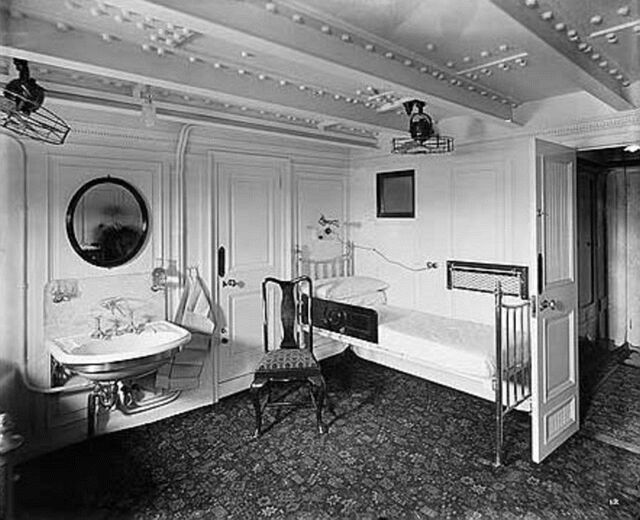
Here we see one of
the spacious Deluxe Suites that had private facilities
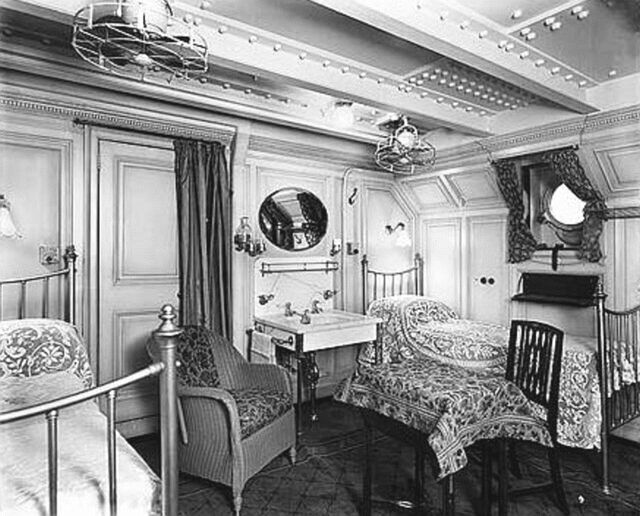
Above &
below: Here we see two of the Deluxe Staterooms
having private facilities
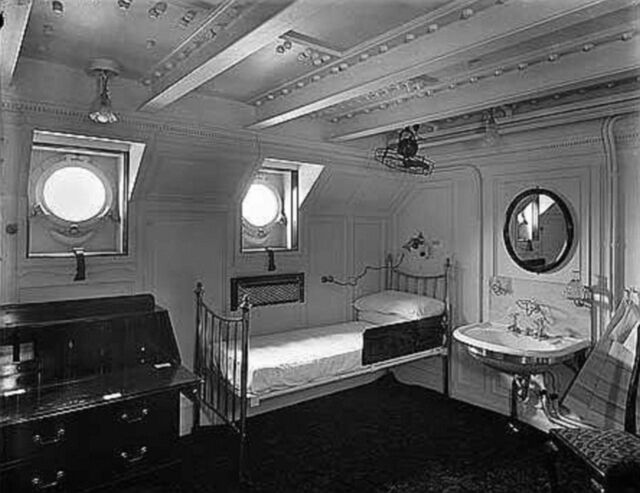
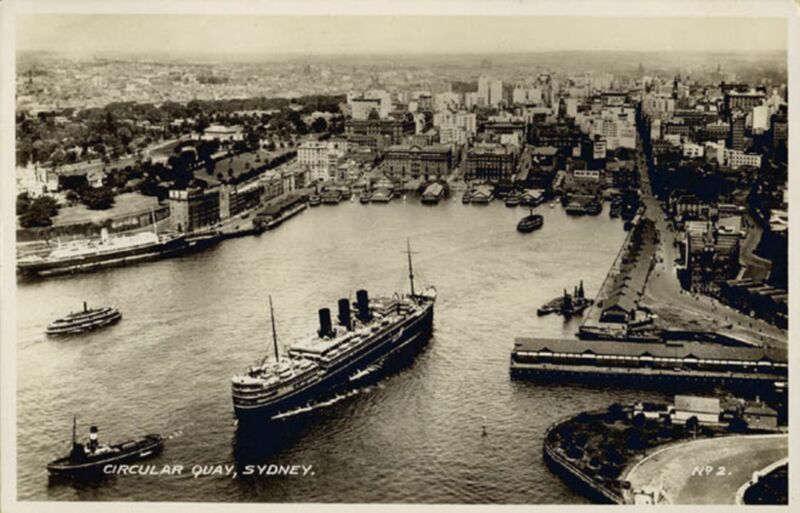
R.M.S. Narkunda is
seen departing Sydney Australia for her return voyage to the
Provided by
****************************
Second Class:
Although the public rooms in this class may have been somewhat less luxurious to those in First Class, however they were light and pleasant venues, providing everything a passenger needed to make their voyage enjoyable. Each venue featured comfortable furnishings as can be seen below, and there was a main Lounge, a Ballroom, Music Room, Library and Writing Room and of course the all important Dining Room.
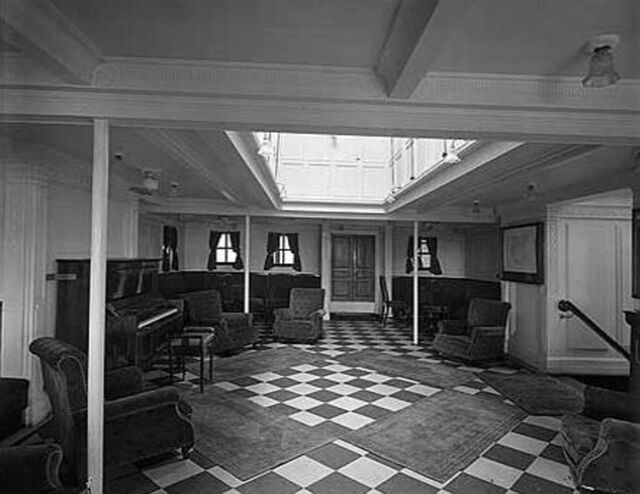
The Music Saloon
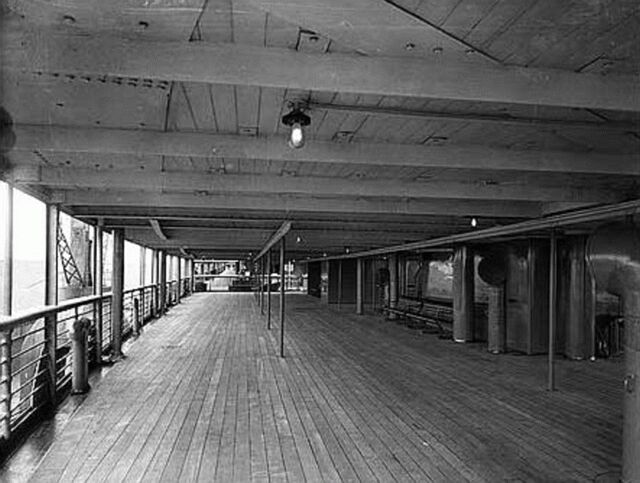
A spacious covered
Promenade Deck, and there were ample open-air decks as well
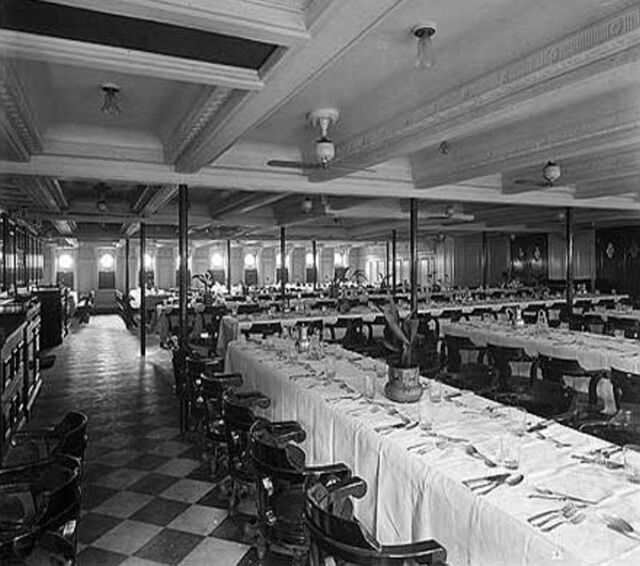
The Dining Room spread the full width of the ship!
Accommodations:
All cabins (except for three rooms) were located outside and had a porthole and they were for the times well fitted out, with all having a hand basin with running water. Outside would be the public bathrooms and other facilities.
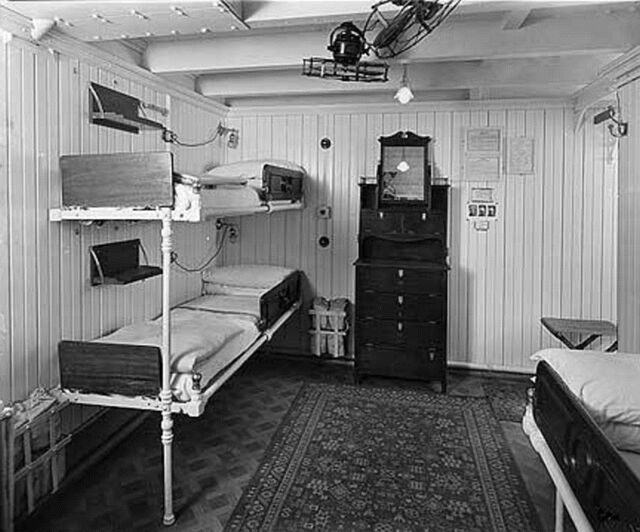
This here we see a
typical three berth cabin, there were also a few single and two berth cabins
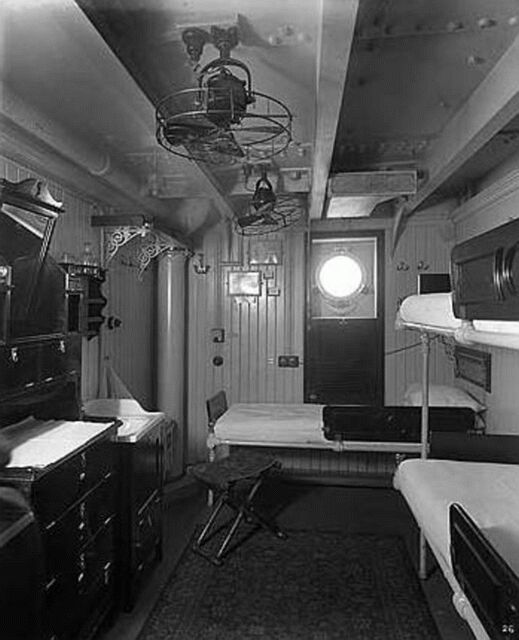
This is three
berth cabin; however there were also four and several six berth cabins
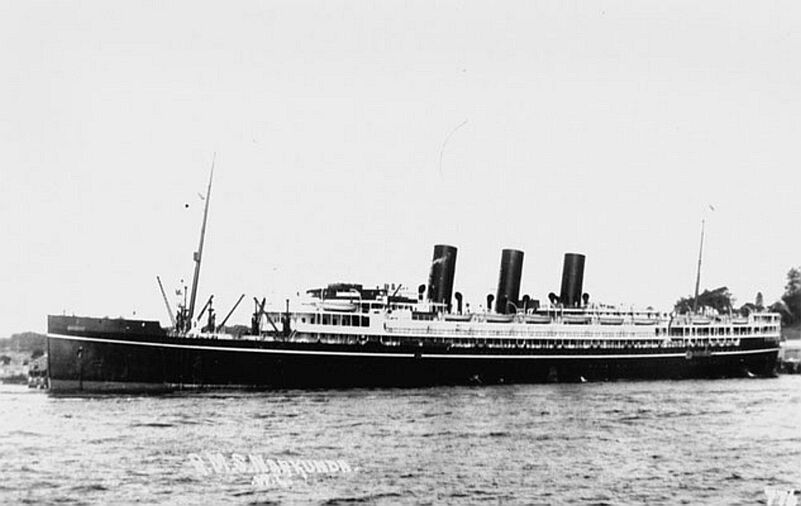
The R.M.S.
Narkunda is seen in
Those two cabin
blocks forward of the Bridge on Boat Deck had by then been removed during her
1935 refit
****************************
She continued sailing to
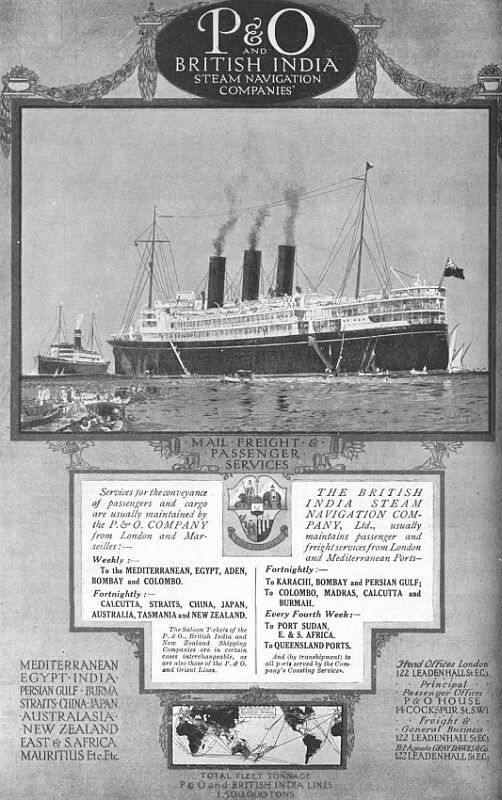
In the 1930’s a combined P&O and British India Line poster was released
On January 11, 1935 the R.M.S. Narkunda and under the Command of Captain Sudell F.R.G.S., R.D., R.N.R., departed London and she sailed as follows; London, Tangier, Gibraltar, Port Said, Aden Bombay, Karachi, Colombo, Fremantle, Adelaide, Melbourne, and Sydney to Brisbane.
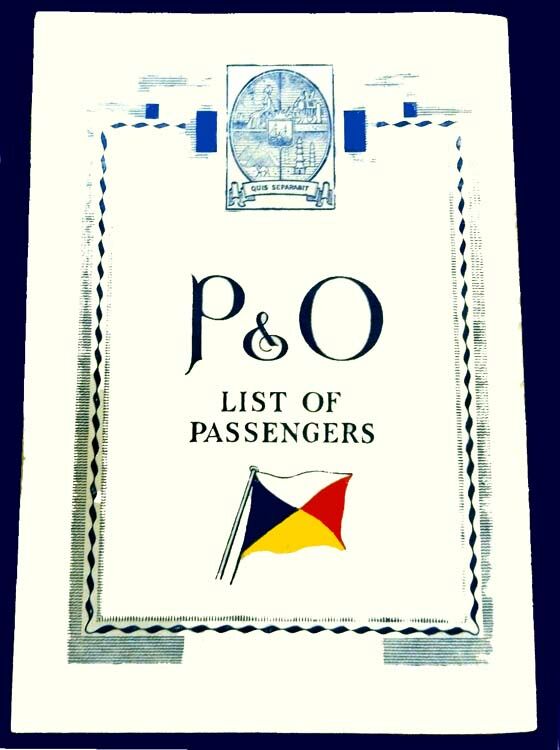
The cover of that voyage’s Passenger List
In 1935 she was given another refit and her Second class became “Tourist class” as the word “second” had become sounding somehow rather cheap and “Tourist” sounded far more respectable. With her superstructure already being white, her Bridge was now also painted white, with some other minor modifications made to her, and those unsightly cabins far forward were removed making her look more like her sister the “Naldera”.
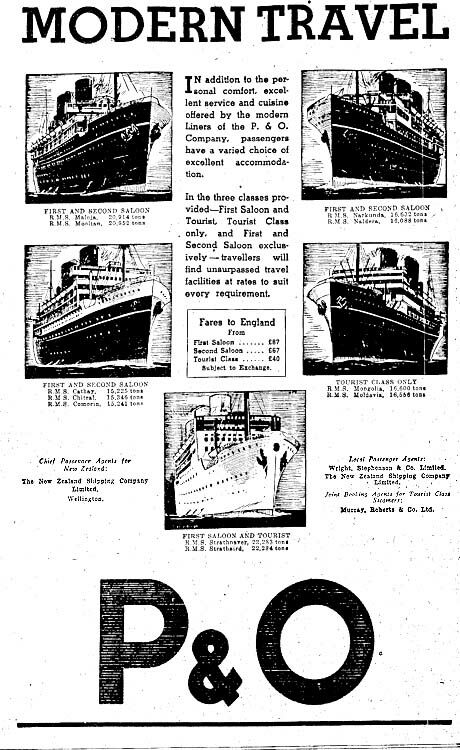
An advertisement
for P&O ships sailing to the
“Narkunda” as a Cruise Ship:
Having arrived in
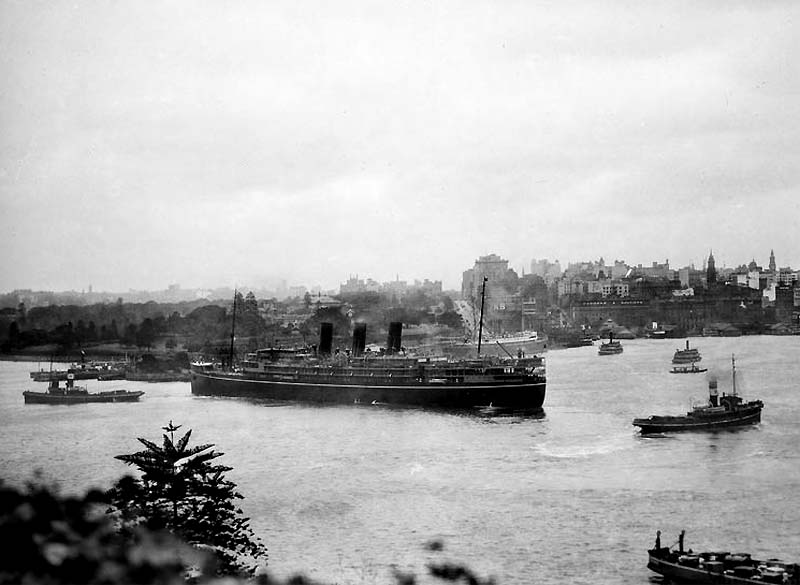
H.M.S. Narkunda is
seen departing
However there was a very special feature on this cruise and her passengers would be able to enjoy not just seeing movies but they were ‘talkies’ using the then revolutionary “Rayeophone sound”.
The Motion Picture Magazine “Everyones” dated December 30, 1936 revealed the following;
Talkies on the R.M.S. Narkunda.
The R.M.S. “Narkunda,” which left
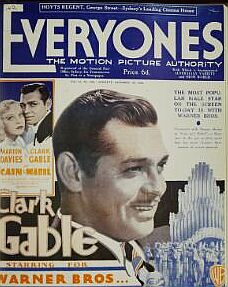
****************************
Fire on board;
On July 15, 1939 a fire reported in No.6 hatch
as she was about to arrive at
The following is from the
FIRE ON R.M.S. NARKUNDA
The P&O liner ‘Narkunda’ is
due in
As the liner was approaching
The chief officer of the Narkunda (Mr. Tonkin) said later that he had found smoke coming from the hold and had ordered a tarpaulin to be thrown over the case of the blaze.
“When we were approaching
At the inquest held at
****************************
Amazingly after 19 years on the Australian service the “Narkunda” remained the most popular P&O ship in their fleet, the truth is that passengers loved sailing on this delightful ship and even as she was slowly aging the “Narkunda” remained in perfect condition.
The “Narkunda” continued her duties to and from Australia, but sadly her life as a passenger liner was about to end in 1940 as sadly another evil war was about to commence.
****************************
R.M.S. Naldera’s
Final Days:

The R.M.S. Naldera
is seen departing
Provided by
In October 1938, the “Naldera”
having had a varied career was paid off after what was a relatively short
career of 18 years. However she was immediately hired to transport
the British Legion Volunteer Police Force to continental
*The “Sudeten Crisis” of 1938 was provoked by the
Pan-Germanist demands of
On 15 October 15, 1938 the R.M.S. Naldera was made ready to be sold, and the very next month she was sold for scrap to “P & W McClellan Ltd” and she arrived at the “Forth Ship breaking Yard” at Bo’nes on November 21, 1938 and she was duly broken soon thereafter.
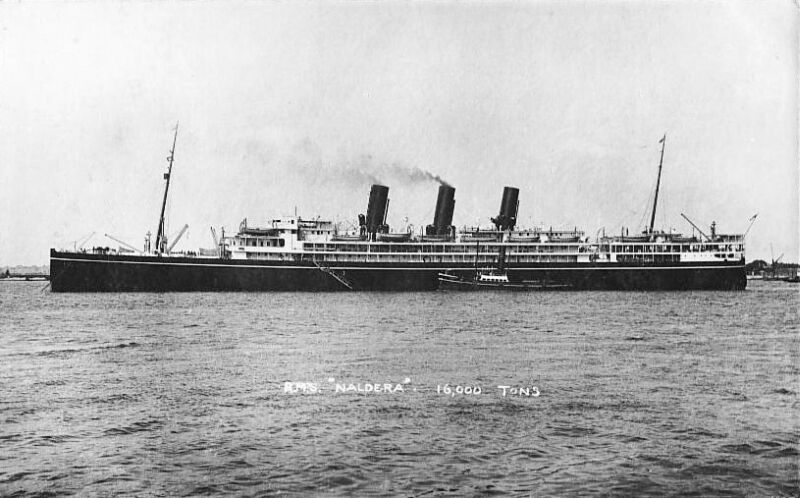
Goodbye R.M.S.
Naldera
****************************
World War Two:
On May 31, 1940 H.M.S. Narkunda arrived at
Southampton having been unable to land passengers at
It was in April 1941 when she was officially requisitioned by the Admiralty and she was rapidly converted to become a Royal Navy troopship, and soon the completed H.M.T. Narkunda was operating as a “Troop Transport Ship”.
Below is a list of some of H.M.T. Narkunda’s Trooping Voyages during 1942.
Early in 1942 she was employed in the
evacuation of
1… Convoy DM1:
The H.M.T. Narkunda was part of a troop
reinforcement convoy of four ships, hurriedly assembled at
The “Narkunda” departed
On June 21, 1942 the 7th Battalion embarked
the H.M.T. Narkunda which departed that day from
2… Convoy 0600Z:
The “Narkunda” departed
3… The Convoy KR1:
With the “Narkunda” still carrying
2168 troops and she together with seven other ships departed Mombassa on March
10. Although the seven ships were all bound for
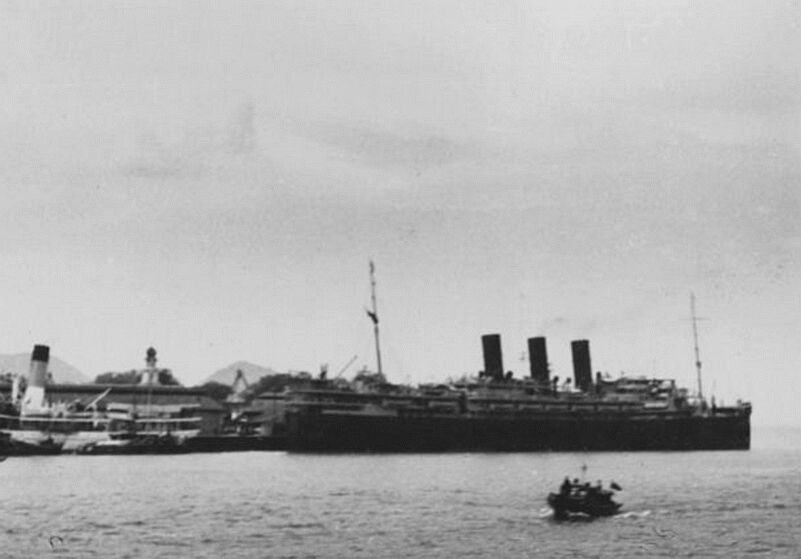
Here we see the
H.M.T. Narkunda berthed at
a very rare photo of her seen as a troopship painted in a wartime dull grey
Provided by
A
Voyage from Bombay UK
The troops and other ship crews escaped from
Rangoon & Hong Kong having had many heroic adventures in
They all boarded the just constructed Danish
ship S.S. Heinrich Jessen which departed
On March 26, 1942 at 10.00 am they arrived at
the “Victoria Terminus” being one the most magnificent buildings in
The “Narkunda” was under
the command of Captain M. G. Draper, and on March 26, at 3.30 pm she
departed
On April 6, 1942
the “Narkunda” arrived in
H.M.T. Narkunda departed
With her engines having been repaired she
departed from
On May 15, 1942 the H.M.T.
Narkunda departed
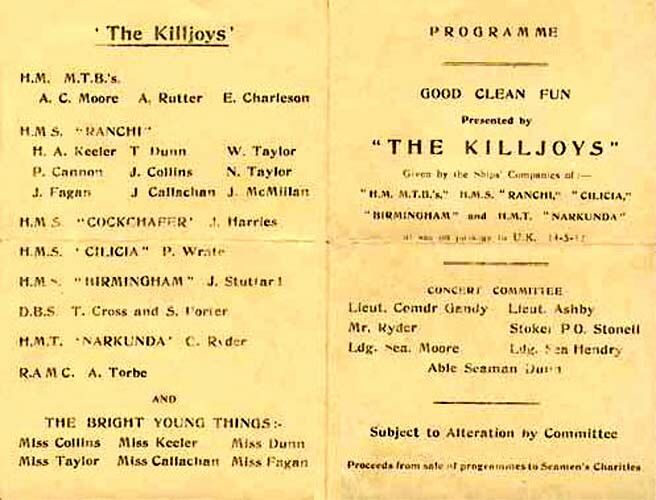
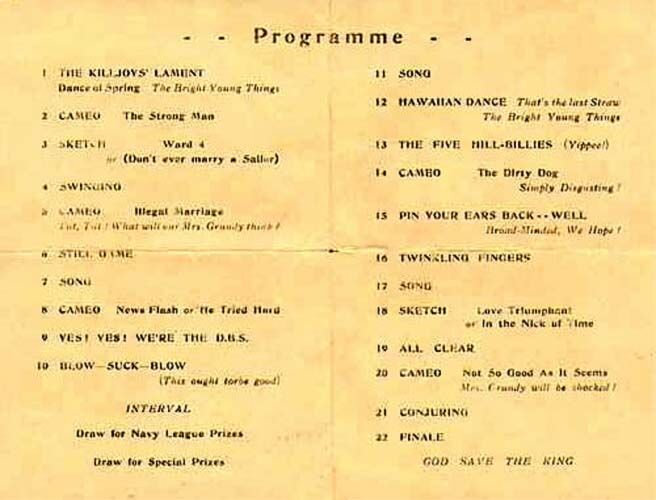
Seven days later on May 22, the
“Narkunda” arrived at the King George V dock (Sheildhall),
A Special Exchange Mission
In August 1942, the H.M.T. Narkunda was
involved in a very special mission, being a programme where Japanese diplomats
would be exchanged for British civilians who were prisoners, and this was
orchestrated in the neutral port of “Lourenco Marques” in
Of course there were other voyages During WW2 but to obtain details on these are very difficult indeed, but above is a reasonably good list revealing the excellent work she did during the war! But sadly we now come to the very last voyage of the wonderful liner and troopship the “Narkunda”.
H.M.T.
Narkunda’s” final tragic voyage:
H.M.T. Narkunda also served during the Allied
landings in French North Africa, in November, 1942, and she was under the
command of Captain L. Parfitt, D.S.C. With all of the troops having disembarked
at Bougie (currently Béjaïa in
However having departed Bougie and as she
headed out of port with the evening about to arrive and she was just off Cape
Carbon, when a German long range, high speed bomber an “Ardo Ar
E.555” suddenly appeared out of the clouds and attacked the H.M.T.
Narkunda dropping several bombs on her and she was badly damaged and holed as
she had been hit on her port side as well as astern. Tragically the attack killed
thirty-one persons onboard. She duly sunk near
Her survivors were picked up by the
minesweeper H.M.S. Cadmus and returned to Bougie, and there the
survivor’s boarded P&O’s ship the “Stratheden” as
well as the Orient Line’s “Ormonde” and they were all returned
to
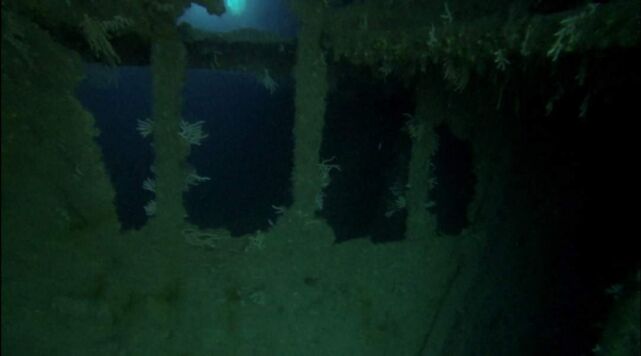
A sad view of
“Narkunda’s wreck
Provided by
****************************
Details & Specifications of the R.M.S. Narkunda.
Type: Passenger liner 1920-1942.
. “Auxiliary Troop Transport” ship WWI & WW2.
Registered owners: “The Peninsular and Oriental Steam Navigation Company” (P&O).
Managers & operator: “The Peninsular and Oriental Steam Navigation Company”.
Builder: “Harland & Wolff
Ltd”,
Yard No: 471.
Slipway No: 8.
Registry:
Official number: 142496.
Signal letters: KFDN.
Call sign: GCVB.
Tonnages: 16,118 GRT, Net tonnage 9,705 NRT, Deadweight 8,650 tons.
. 16,227 GRT in 1922.
. 16,572 GRT after 1935 refit.
Launched: April 25, 1918
Delivered: March 30, 1920.
Length: 177.15m - 581.4ft).
Breadth: 21.15m - 69.4ft).
Draught: 8.921m - 29.3ft).
Engines: Quadruple-expansion steam engines.
Engine builders: “Harland & Wolff Ltd”,
Power: 1430 NHP, 18000 IHP.
Propulsion: Twin screw.
Speed: 17 knots service speed, 18.5 knots maximum.
Accommodations: Total 673 passengers, with 426 in First Class, 247 in Second Class.
. Second Class became Tourist in 1935.
Crew: Total 227, being made up of 9 officers, 60 seamen, 18 engineers, 140 saloon and cabin crew and firemen.
Cargo capacity: 8,829 cubic m (311,841 cubic ft) including 2,916 cubic m (103,000 cubic ft) insulated space.
Fate: Bombed and sunk November 14, 1942.
Service:
****************************
Enter here for a YouTube video of the “Narkunda” and her interior’s
Although there is German writing under the video, it is a musical and visual YouTube presentation
Remembering the …
R.M.S. N
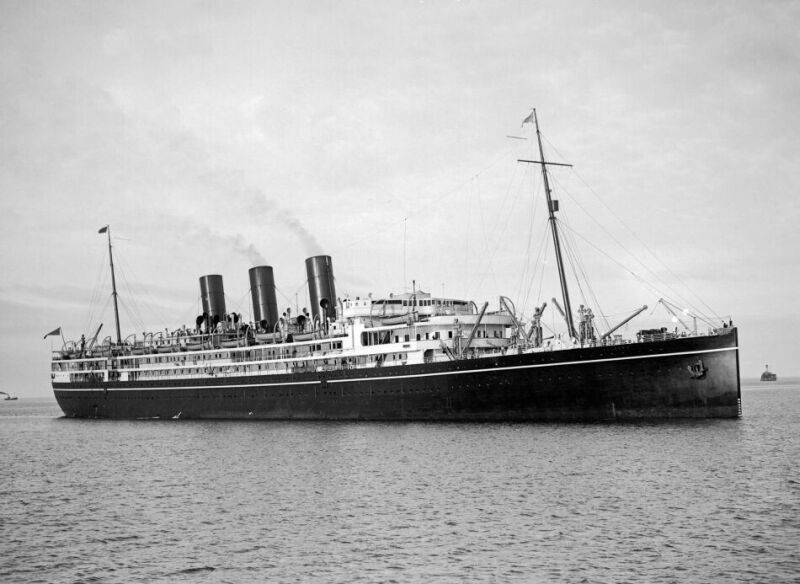
A magnificent view
of the remarkable R.M.S. Narkunda seen during her final days as a liner
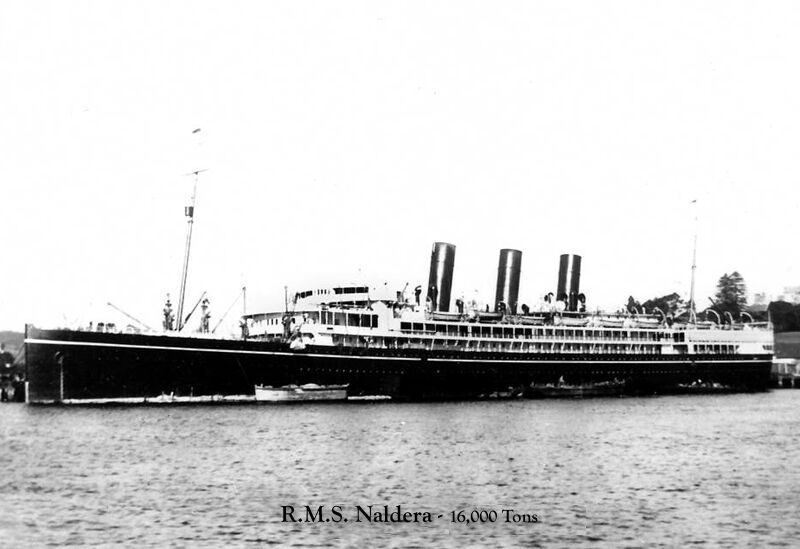
A fine postcard of
the R.M.S. Naldera towards her final days
****************************
“Blue Water Liners sailing to the distant shores.
I watched them come, I watched
them go and I watched them die.”
Featuring over 1,435 Classic Passenger Liners, Passenger-Cargo Liners & Classic Cruise Ships!
Or ENTER HERE
For interest: Sadly an email service to ssMaritime is no
longer available, due to the author’s old age, severe
chronic illnesses as well as being completely disabled and poor eyesight, etc.
In the past ssMaritime received between 120 to around 140 emails per day, but
****************************
ssMaritime.com & ssMaritime.net
The Author has been in Passenger Shipping & the Cruise Industry for well over 60 years
In addition he was the founder of “Save the Classic Liners Campaign” in 1990.
Please Note: ssmaritime and associated sites are 100% non-commercial and the
author seeks no funding or favours of any shape or form, never have
and never will!
Photographs on ssmaritime and associate pages are by; the author or from the author’s private collection. In
addition there are some images that have been provided by Shipping Companies
and private photographers or collectors. Credit is given to all contributors.
However, there are some photographs provided to me without details regarding
the photographer/owner concerned.
This notice covers all pages; although, and I have done my best to ensure that all photographs
are duly credited and that this notice is displaced on each page, that is, when
a page is updated!
ssMaritime is owned & © Copyright by Reuben Goossens - All Rights Reserved

